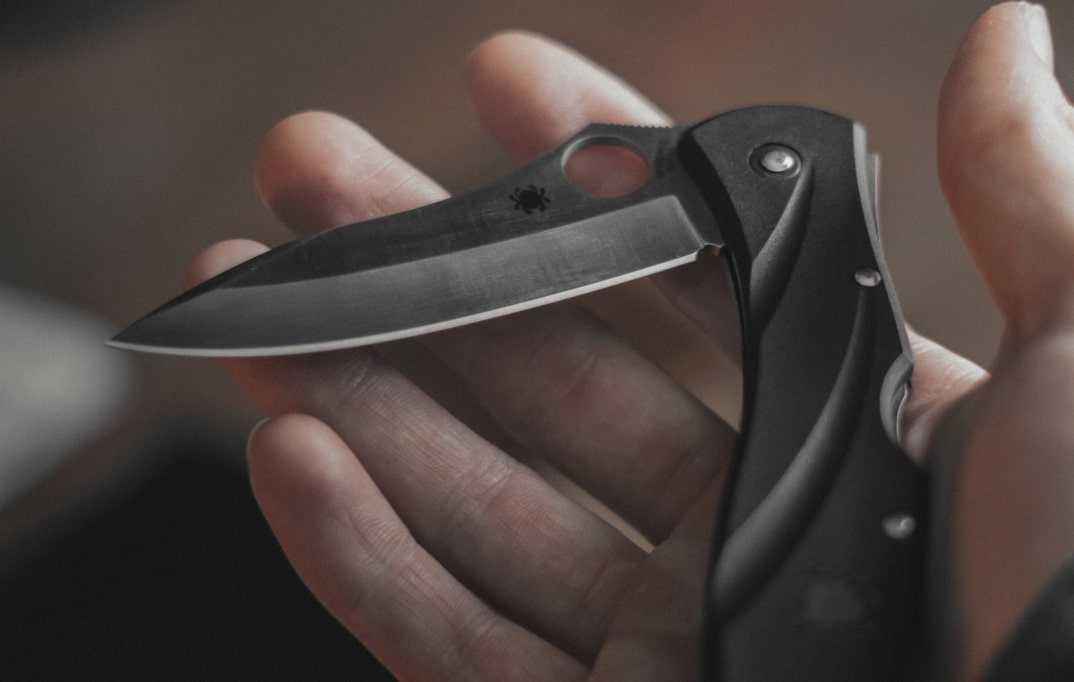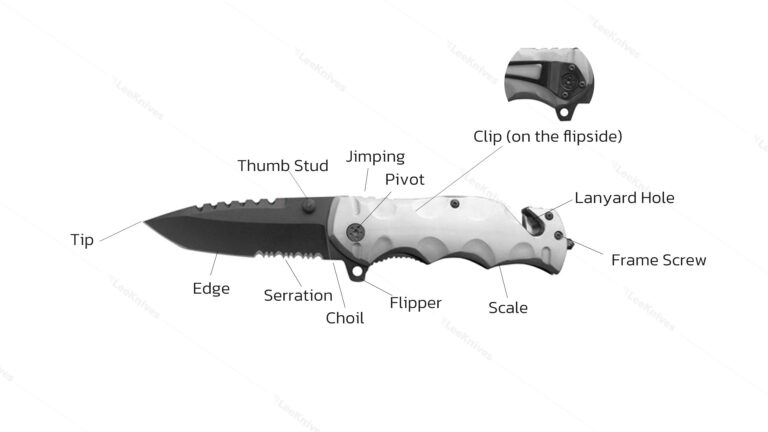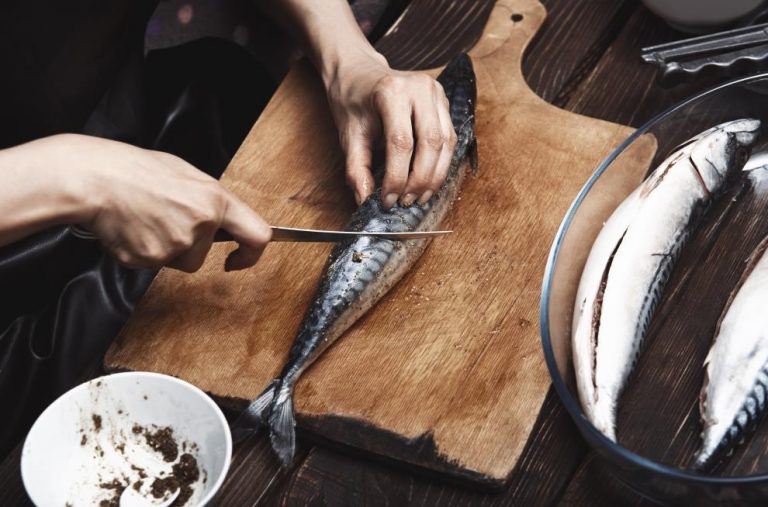With the evolution of design and materials, pocket knife open mechanisms have become increasingly diverse and innovative, catering to the varied needs and preferences of their users. In this article, we will discuss the most common pocket knife open mechanisms and how each one works to ease your knife usage experience.
You’ve seen different types of pocket knives, and you’ve tried on pocket knives with unique blade designs, but do you know why the knife is designed the way they are, and what is an opening mechanism?
Opening mechanisms, as the name suggests, decide how one opens the folded sharp blade. There are four opening mechanisms for pocket knives: Assisted opening, automatic, manual, and dual-action. The functionality and efficiency of pocket knives are highly influenced by the open mechanisms they employ. Knowing the differences among these mechanisms will not only improve your understanding of pocket knives but also ensure you make an informed decision when selecting one to suit your requirements.
In the following article, we’ll help teach you to learn the four opening mechanisms closely and discuss the numerous openers applied to each opening mechanism. Read on to find out!
Pocket knife opening mechanisms
Manual
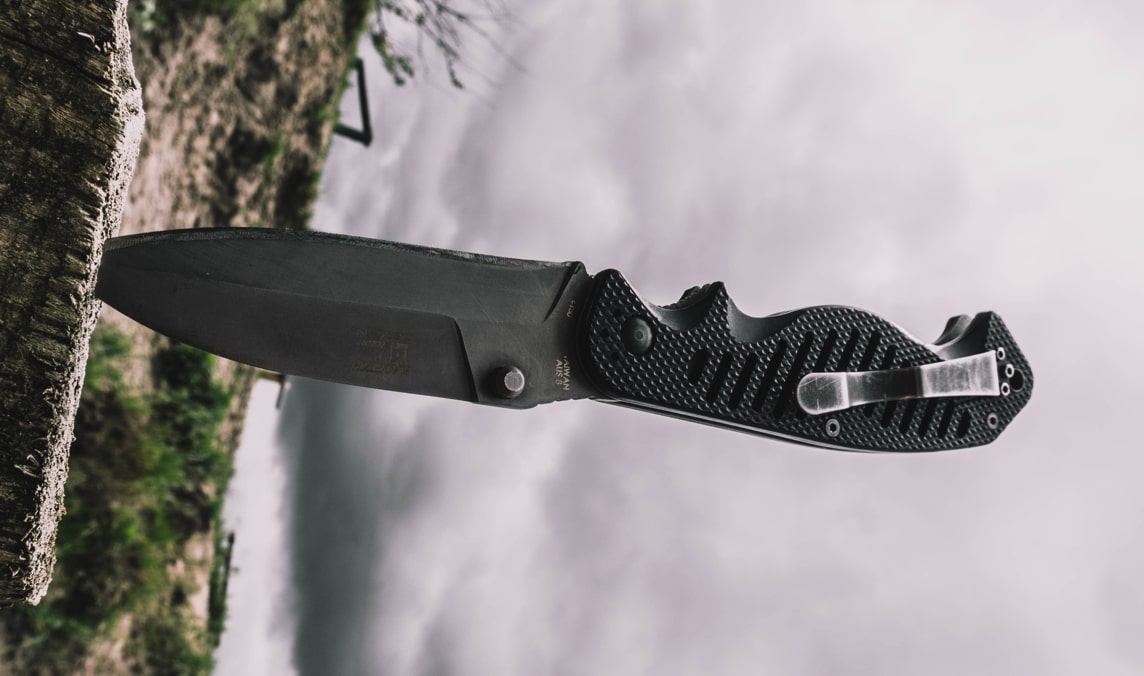
The manual opening mechanism of a pocket knife is straightforward; the term “manual” indicates that these knives necessitate a deliberate action for deployment.
Operating a manual knife demands your full engagement to unfold the blade. Common openers involve utilizing a thumb stud, nail nick, or a hole in the blade to facilitate a firm grip and draw the blade open. Manual knives are renowned for their reliability and simplicity, making them widely favored. They are generally easier to maintain and less prone to breakage compared to assisted-opening and automatic counterparts. The main drawback lies in their potentially slower deployment, rendering them less optimal in emergency scenarios.
Automatic/Switchblade
Automatic knives, often referred to as switchblades, use a button or switch located on the handle for blade deployment. A simple press of the button causes the blade to swiftly spring into position, ready for immediate use. While automatic knives offer speed and convenience, they are subject to legal limitations in some states. Additionally, there is a potential safety risk as they can inadvertently open if the button is pressed unintentionally.
Assisted-opening
Though not fully automatic, assisted-opening pocket knives are significantly more user-friendly than their manual counterparts and typically involve a minimal learning curve.
These knives are equipped with a spring mechanism that facilitates blade opening with a gentle push. Activation is achieved by applying pressure to a thumb stud or flipper, allowing the spring to take over and smoothly open the blade rapidly. The popularity of assisted-opening knives stems from their convenience and ease of use. However, it’s worth noting that their legality may be restricted in certain jurisdictions, and they might be perceived as less secure compared to manual knives.
Dual-action
Dual-action combines both opening mechanisms simultaneously, offering a range of options. These knives can be intricately designed, providing users with increased versatility.
However, from a seller’s perspective, manufacturing and selling dual-action pocket knives may not always be the most lucrative venture. The perception is that they might be less popular, and potentially deemed clunky, and the increased choices could lead to more after-sale issues.
The appeal of dual-action knives lies in their ability to merge the advantages of both automatic and manual knives. Users have the flexibility to choose between manual and automatic modes, adapting to diverse situations. Despite their versatility, dual-action knives tend to be pricier and may encounter legal restrictions akin to those faced by automatic knives.
Buy Wholesale Knives and Start Scaling up with Us Today
Contact us and connect with a sales rep to get a free quote.
Different Types of Pocket Knife Openers
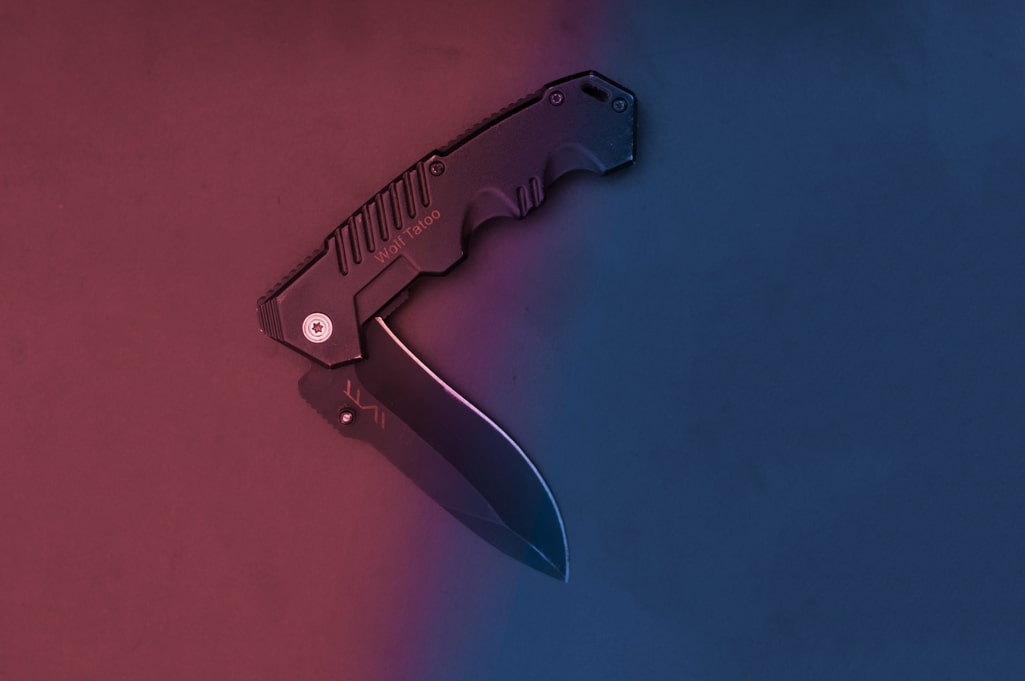
Each opening mechanism acomadates to different types of openers. When choosing a pocket knife, it’s essential to consider the various opening mechanisms available. Each type provides different levels of convenience and security, so knowing your options will help you find the perfect fit. In this section, we will discuss some common pocket knife openers and their features.
Flipper
Flipper knives utilize a small tab that protrudes from the blade’s spine when the knife is closed. To open, simply apply pressure with your index finger, and the blade will swiftly deploy. Flippers provide a quick and easy one-handed opening option.
Thumb hole
A thumb hole provides a circular cutout in the blade for opening. By gripping the handle and placing your thumb in the hole, you can apply leverage to open the blade. This mechanism offers easy and convenient access, similar to the thumb stud.
Thumb stud
The thumb stud is another popular opener, consisting of a small post or stud mounted on the side of the blade. To use it, place your thumb against the stud and push the blade open. It allows for a smooth, controlled opening process.
A button opening mechanism, seen on automatic or “switchblade” knives, releases the blade using a spring when the button on the handle is pressed. While automatic knives are convenient and easy to use, they may be subject to legal restrictions in some areas.
Front flippers
Front flippers have a flipper tab located on the front side of the handle. Users can roll their thumb over the top of the handle and onto the tab to deploy the blade. It may require some practice, but it offers a discreet and customizable opening experience.
Wave
The wave feature is an innovative and unique opening mechanism that uses a protrusion on the blade’s spine, often shaped like a hook or wave. By pulling the knife from your pocket, the wave catches on the edge of the pocket, deploying the blade automatically.
Nail nicks
Nail nicks are found on traditional folding knives and feature a small cutout located on the blade’s spine. You can use your nail or a tool to pry the blade open, which can be a slower and more deliberate process compared to other options.
Thumb Slide
The thumb slide uses a slider on the handle, or the hidden release, where the blade is deployed by pressing a less visible button or switch.
Buy Wholesale Knives and Start Scaling up with Us Today
Contact us and connect with a sales rep to get a free quote.
The concealed release, a discrete opening mechanism, involves a covertly placed mechanism on the knife. When activated, this hidden release allows for a subtle and inconspicuous deployment of the blade, adding an element of secrecy to the opening process. Users may need to familiarize themselves with the specific location and technique for activating the hidden release, contributing to a unique and understated opening experience.
Butterfly
The butterfly, or balisong, features a distinctive opening mechanism characterized by two handles that rotate around the pivot point. To deploy the blade, the handles are manipulated with a fluid flipping motion. Mastery of the butterfly knife involves skillful handling of the handles to achieve a seamless and captivating opening. While it may require practice to master, the butterfly knife offers a dynamic and visually engaging experience, making it a favorite among enthusiasts for its unique flipping action.
Choosing the opening mechanism and opener for a pocket knife
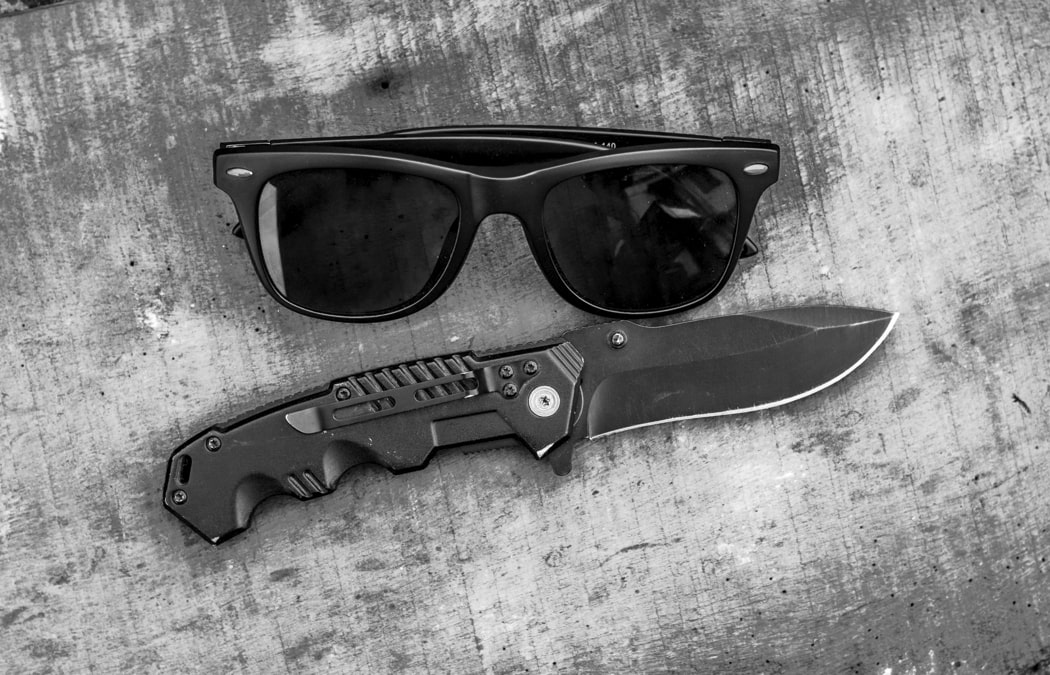
When selecting a pocket knife, it is essential to consider the practical aspects and benefits of the available opening mechanisms. As you search for your ideal everyday carry (EDC) tool, you must think about safety, ease of use, and accessibility.
Firstly, consider how easy it is to open the knife with one hand. This feature becomes crucial in situations where your other hand is occupied or unavailable. Many knives on the market offer one-handed opening mechanisms, such as thumb studs, flippers, and assisted opening systems. Some designs work exceptionally well for left-handed people or are ambidextrous, accommodating both left and right-handed users.
Next, think about the safety features of your pocket knife. Many models have locking mechanisms to prevent the blade from accidentally closing while in use, avoiding potential injuries. Liner locks, frame locks, and back locks are common and reliable options to ensure safety during use.
Carrying convenience is another important factor to consider. Some pocket knives have built-in clips to secure the knife to your pocket, bag, or belt, ensuring it is easily accessible and secure. Others may feature a lanyard hole or a small carabiner, so you can fasten the knife to your gear.
Lastly, consider the price point and added benefits of the knife opener mechanisms when making your decision. More advanced and specialized openers may come at a higher cost but may offer additional features or enhanced durability that justify the investment. Make sure to assess the market and sales trends to find the best-valued knife to match your preferences and needs.
Working with professionals
By now, you likely have a solid grasp of pocket knife opening mechanisms and various choices for openers, to the point you can’t wait to have a pocket knife of your own design to start off.
Should any lingering doubts or questions about selling pocket knives in your store persist, or if you’re considering outsourcing the manufacturing process to seasoned professionals, feel free to reach out to LeeKnives! Our range of services includes manufacturing, white labeling, dropshipping, and knife customization. Get in touch with us today to explore how we can assist you in your venture.
